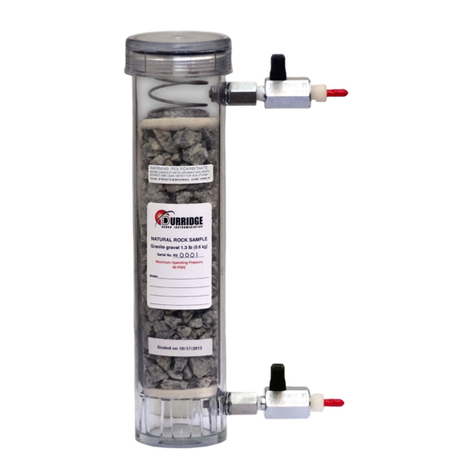
............................................................................................................................2.3.6 Data Delete 23
......................................................................................................................2.3.7 Data Renumber 24
..............................................................................................................................2.3.8 Data Erase 24
.............................................................................................................2.4 Setup 24
........................................................................................................................2.4.1 Setup Protocol 24
Table 2.4.1 Preset protocols!24
.............................................................................................................................2.4.2 Setup Cycle 24
..........................................................................................................................2.4.3 Setup Recycle 25
.............................................................................................................................2.4.4 Setup Mode 25
..........................................................................................................................2.4.5 Setup Thoron 25
............................................................................................................................2.4.6 Setup Pump 26
..............................................................................................................................2.4.7 Setup Tone 26
..........................................................................................................................2.4.8 Setup Format 26
.............................................................................................................................2.4.9 Setup Units 27
.........................................................................................................................2.4.10 Setup Savuser 27
............................................................................................................................2.4.11 Setup Clock 27
..........................................................................................................................2.4.12 Setup Review 28
...........................................................................................................2.5 Special 28
..........................................................................................................................2.5.1 Special Ident 28
........................................................................................................................2.5.2 Special SPrOn 28
........................................................................................................................2.5.3 Special SPrOff 28
......................................................................................................................2.5.4 Special SetBaud 28
.........................................................................................................................2.5.5 Special Status 28
...........................................................................................................................2.5.6 Special Start 28
............................................................................................................................2.5.7 Special Stop 28
....................................................................................................................2.5.8 Special Comspec 29
......................................................................................................................2.5.9 Special ComAll 29
........................................................................................................................2.5.10 Special SPrAll 29
.......................................................................................................................2.5.11 Special S-Load 29
.......................................................................................................................2.5.12 Special Version 29
........................................................................................................................2.5.13 Special Model 29
.........................................................................................................................2.5.14 Special Serial 29
...........................................................................................................................2.5.15 Special Beep 29
........................................................................................................................2.5.16 Special Relays 29
..............................................................................................2.6 Infrared Printer 29
Alpha Energy Spectrum!30
..................................................3. BASICS OF RAD7 TECHNOLOGY: 31
HOW IT WORKS 31
...................................................................................................3.1 Introduction 31
......................................................................................3.2 Radon Decay Chain 31
Radon and Thoron decay chains!32
................................................................................................................3.2.1 Radon-222 (Radon) 33
...............................................................................................................3.2.2 Radon-220 (Thoron) 33
....................................................................................3.3 Continuous Monitors 33
4




























